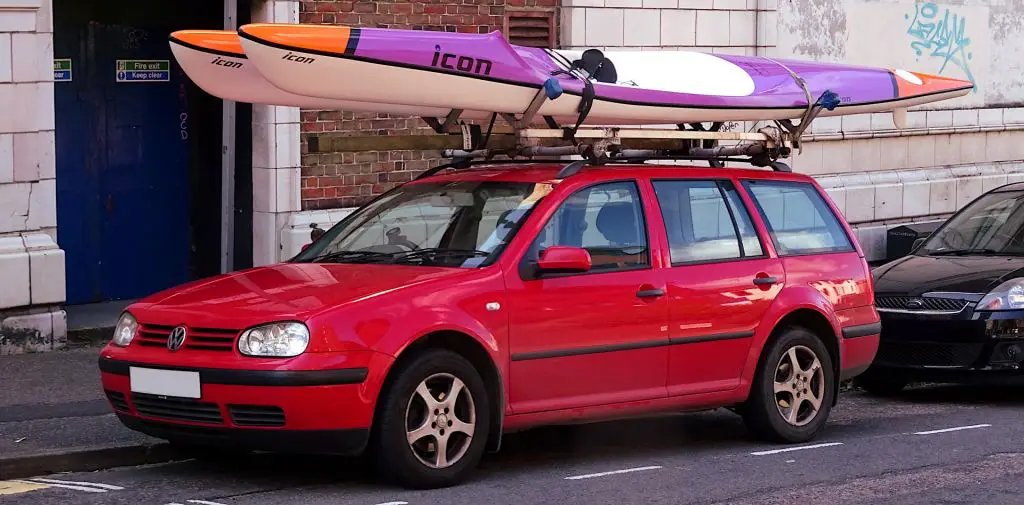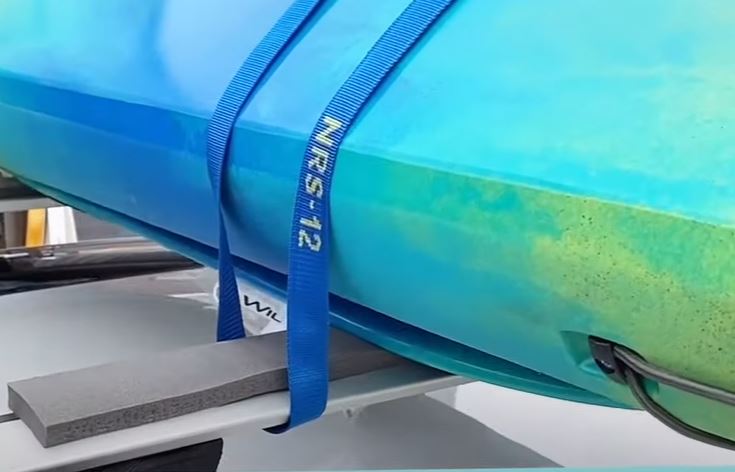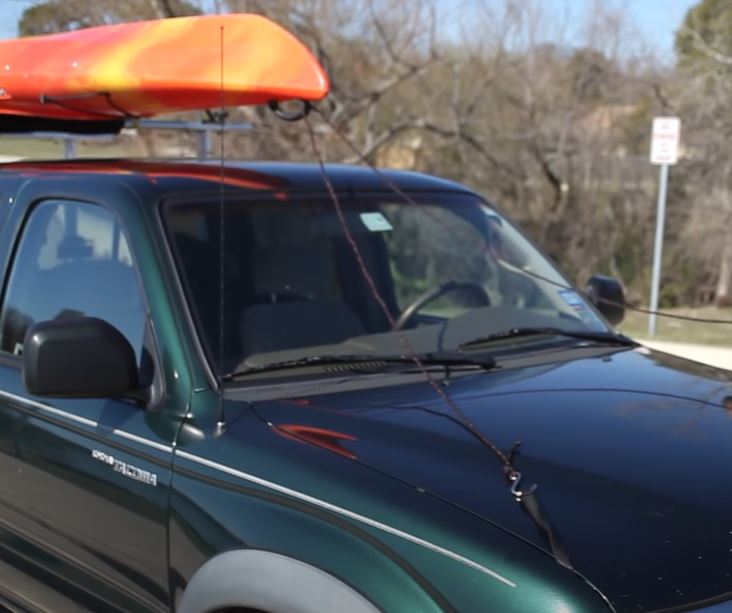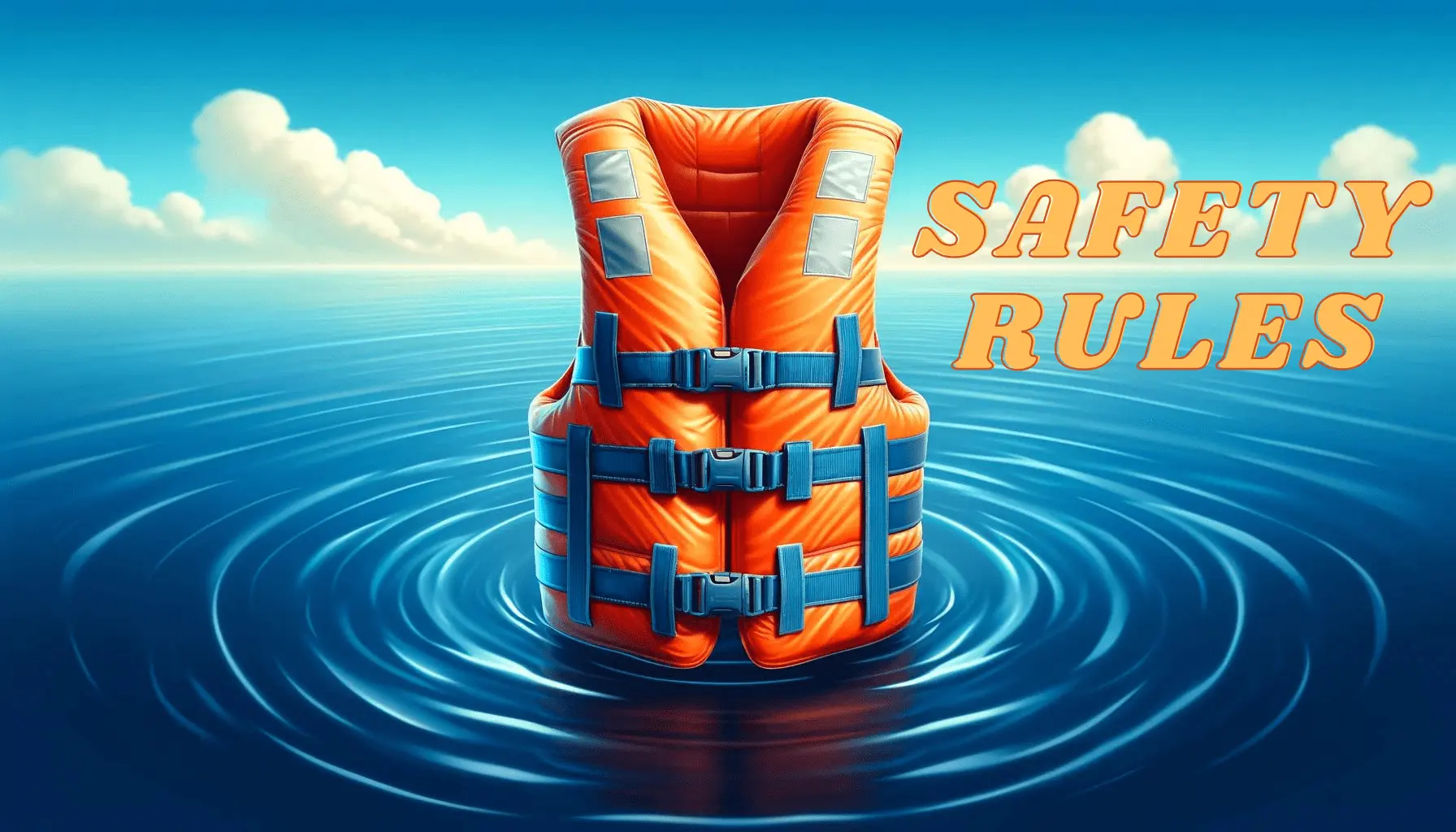Kayaking is a beloved outdoor activity enjoyed by many. However, moving your kayak on the road can be difficult since not knowing how to transport it can damage a good boat, especially if you want to transport a kayak on a ladder rack.
Therefore, it is crucial to properly strap your kayak to the vehicle to ensure it stays safe and secure. A ladder rack is a convenient and efficient way to transport your kayak. However, it’s important to know how to properly secure it to prevent damage to your kayak or vehicle.

In this article, I will go over the proper techniques for strapping your kayak to a ladder rack, ensuring that it stays secure during transport, and preventing any damage to your kayak or vehicle.
But first, let’s answer one question.
Can You Put a Kayak on a Ladder Rack?
Of course, the main purpose of the ladder rack is not to carry a watercraft on it, but you most certainly can put a kayak on a ladder rack. But before you tie your kayak to a ladder rack, there are a few things to consider.
Additionally, using a few tips, which I will write about after, will ensure a more comfortable and safer ride for your watercraft. So let’s go over these important points that you need to know before carrying a kayak on a ladder rack.
- You should know the weight limitations. When it comes to ladder racks, there are some weight limitations. These ladder racks can carry a set amount of weight. Always make sure that your kayak does not exceed this limit. Racks should be rated to hold about a hundred pounds more than the combined weight if you plan to put more than one kayak on them.
- Ladder rack. If this is your first time dealing with ladder racks, buying guides and ready-to-use racks are advisable to avoid the complexity of assembling the racks.
- Component racks. Finally, if you plan on transporting your kayaks for an extended period of time, consider purchasing component ladder racks. Professional racks have all of the features you’ll need to get you and your kayak safely to your destination.
How to Secure Your Kayak to a Ladder Rack
Transporting a kayak is relatively easy, but you must ensure that your paddled boat is loaded correctly onto your vehicle to guarantee safety.
It can be challenging to tie your kayaks to the rack. Sometimes, no matter how many fancy knots you tie, the kayak does not stay in place. Well, we are here to ensure that you face less hassle and that things become easier.
Here’s a step-by-step guide to securing your kayaks to ladder racks. We will walk you through the process step-by-step so you can understand how to complete it quickly.
What do we need to tie down a kayak on a ladder rack?
Before securing a kayak to a ladder rack, you must have complete tools and materials to start the process, since an inappropriate kit cannot lead you to complete the procedure successfully. Thus, let’s have a look at the list!
To secure a kayak well, we need the following tools:
- Two 12-foot cam buckle tie-down straps.
- Pair of ratcheting sentry bow and stern tie downs.
- Two webbed loops.
You can also purchase a special kit that includes the tools described above. Now you have a general idea of the tools and can start putting the kayak on the ladder rack.
Step-by-Step Instructions for Securing a Kayak to a Ladder Rack
When tying the kayak to your car, make sure that your roof rack has saddles, cradles, and other components so that the kayak is fastened in place.
It is also possible that these components are not available or not present. You can always get the job done with some durable straps. A good suggestion is to use roof rack pads to secure the kayaks further. Moreover, also look at the points mentioned below before loading your kayak.
Step 1: Equal Balance and Placement
Place your kayak face down on the rack. I advise you to do it with someone else, so it will be easier for you to put it on the ladder rack.
The weight of the kayak should be equally balanced. There should be at least 2 inches of clearance between the kayak and the vehicle.
Position the kayak’s widest parts over the places tied down. By protecting the kayak at its broadest points, you can keep it from drifting or swaying while in transportation.
Step 2: Looping Strap with the Bar

Loop the straps underneath the bar and continue pulling the end of the strap. The buckle should be even with the opposite end of the straps.
Toss the two hanging ends of the strap across the vehicle, so the straps are looped around the bar and over the kayak.
Step 3: Fastening the Buckle
Now you will grab the loose end of the strap and loop it through the underside of the bar. Pull on this end until the buckle rests along the side of the kayak.
Open the buckle, insert the other end of the strap from behind, and keep pulling it towards you until you are sure it is tight.
Step 4: Securing Kayak
To ensure the kayak is securely fastened, grab the handle and shake the kayak. This movement should move the entire vehicle, not just the kayak. So if your vehicle also moves, it means that the kayak is well secured.
Tie the extra strap around itself, preventing it from coming loose. Tie down the remaining straps to the bar so they do not flap around while driving. Repeat these steps for the other end of the kayak.
Step 5: Bow and Stern Tie-down

Using bow and stern tie-downs will stop the kayak from moving forward and backward. You can use the water-resistant rope, but ratcheting lines are preferable. Remember to tie off the loose end of the line below the ratchet.
After all these steps, your kayak should be secured and will only move once you reach the water.
And that’s it; your kayak is now secured to the ladder rack.
I’ll leave a video for you below where you can visually see how to properly tie down a kayak on a ladder rack.
Tips for carrying your kayak on a ladder rack
Well, let me give you a few tips now. Not only will these tips help you place your kayak more safely on a ladder rack without damaging it, but they will also allow you to secure and carry it safely.
So let’s take our time and get down to reviewing these tips.
- First tip is to use pool noodles. Wrap pool noodles around the steel tubing when securing your kayak to a ladder rack. This way, your kayak will not come into contact with any hard surfaces, preventing deformation and scratching the steel tubes. To keep the pool noodles secured and in place, wrap a couple of strips of electrical tape around them to keep them on. Ensure that both straps are tight enough but not too tight to damage the kayaks. Plastic hulls and fiberglass can be deformed by excessive tension.
- Put it in the center. Ensure that the front and rear of your watercraft are between the rack on your car and parallel to the car.
- Post tie down check. After a few minutes of driving, pull over and check if the kayaks are still secure by tugging at the straps. Errors are common, and sometimes straps come undone while driving.
- Check manufacturer instructions. Whenever you buy rack components, make sure you know how to use them. Consult the manufacturer’s guide. Do not take matters into your own hands.
- Stop periodically to ensure that all straps and lines are still securely fastened. Also, one of the articles on Paddling.com on tips and tricks for transporting a kayak recommends stopping occasionally if you’re on a long trip to check that everything is tightened up well.
Should a Kayak be Transported Upside Down?
You can transport your kayak top side up, but I recommend you use saddles to transport your kayak this way. It will be difficult to secure the kayak without saddles because most do not have a flat surface on the bottom.
It also depends on the material from which your kayak is made. I’ve described a few points below for you where I explain how to transport kayaks made of various materials and in various time conditions.
- Composite materials. Paddled boats made with composite materials are expensive but need to be more sturdy. They are prone to damage if not transported correctly. They must always be carried upside down because the tie-downs and straps used to hold them in place do not deform. Also, it causes the hull to crack.
- Plastic materials. Kayaks made of plastic materials can be transported in any orientation you want. Plastic kayaks are made from high-density polyethylene, which makes them very sturdy. These will not be deformed or damaged, no matter how you transport them.
- Inflatable kayaks. This kind of kayak is easy to move and transport. You can put it on the top of your vehicle upside-down or right-side up. Furthermore, it can be carried inside the car if it is not inflated. It would help if you carried a pump with you for later.
- Bad weather. Carrying your kayaks upside down when the weather is stormy is advisable. The cockpit of your kayak will be dry in case there is rain. A kayak filled with water is dangerous.
But remember that all kayaks, no matter the type, must be appropriately centered on the vehicle and securely fastened so they do not move during travel.
It will strengthen the vehicle’s management, decrease energy consumption, and keep it from dropping off during transit.
Final Thoughts
Transporting the kayak is easier when you learn the right techniques and tips. Using the right methods can make your overall experience hassle-free and help your kayak work longer and perform better. Otherwise, you will lose all the fun while traveling on your kayak.
With this guide, you will not have to worry about damaging your kayak or causing an accident while you are on the road. We have jotted down some steps that help properly strap a kayak to a ladder rack.
Now that you know how to transport your kayak on a vehicle. But you may need landing gear to transport your kayak on land. You can buy it or make it yourself.
Below, you can read an article about how to make wheels with your own hands.
Step-by-Step Guide On How to Make DIY Kayak Landing Gear.



